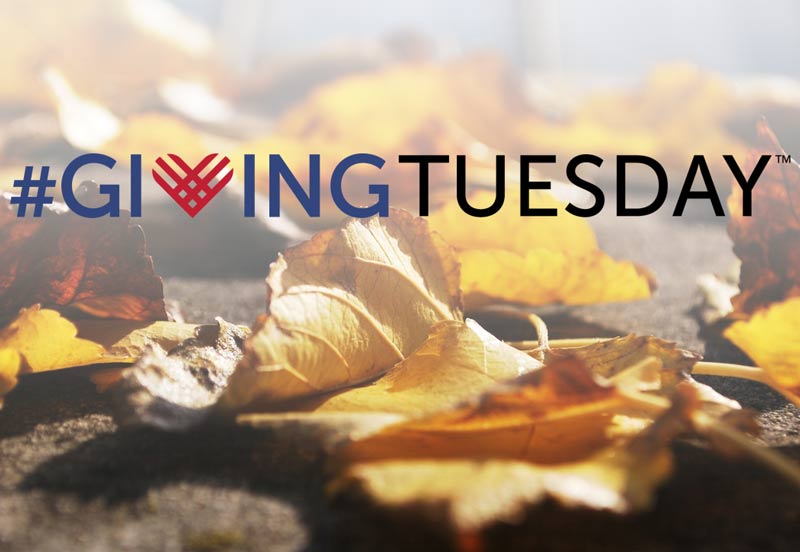
While you may have read our last post “4 M’s That Motivate #GivingTuesday,” in this post, we aim to explore what it looks like to turn the trends surrounding both fundraising and #GivingTuesday into practical strategies to help you raise funds this year.
Giving is on the rise, increasing 7.1% last year and moving the GDP for giving from 2% to 2.1%. While that increase may not sound earth-shattering, maybe this fact will: the GDP around giving hasn’t moved up or down in the last 40 years.
So how do you tap into the new trend of giving to generate funds for your organization?
Check out this list of statistics that can help guide your own initiatives this #GivingTuesday:
1. #GivingTuesday Was Mentioned 3 Times More On Twitter Than On Any Other Social Media Network
Getting your Twitter strategies ready for #GivingTuesday will be an important tool in promoting your fundraising campaign. With the national day of giving’s hashtag, #GivingTuesday word can spread fast about your campaign and reach a new, broader audience.
The Badass Brooklyn Animal Rescue, who presented at the #GivingTuesday Summit back in June shared some of their #GivingTuesday Twitter Strategies:
1) Make It Personal. Instead of just using the #GivingTuesday hashtag, they personalized it for them: “#GivingTuesday to the dogs.” This clever phrase got them attention and piqued interest as to what they were doing-running a campaign to save dogs from kill Shelters
2) Make It Visual. Posting pictures on twitter engages follower 3x as much as those without, but additionally, images that show the work you’re doing cause an even greater impact. Badass Brooklyn Animal Rescue regularly started Tweeting pictures of dogs they’ve saved with the message “Donations Saved My Life” on the front, showing how the money they collect is being used.
3) Follow Up With “Thank You’s.” While Badass Brooklyn Animal Rescue featured “badass dogs” while they were fundraising, afterward, they recognized on Twitter the “badass humans” that were helping these dogs through their donations. Not only did they thank them, but they also featured human stories and why they care for the cause.
Download your #GivingTuesday planning guide
2. Last year, $6-10 Billion Dollars Of Matching Grants Was Never Claimed
That’s staggering, isn’t it?! This means that a lot of matching grants haven’t been tapped into, and it’s a powerful option for you.
51% more donations come in when you have a matching grant in place (before the matching grant) because donors feel they are getting a good deal and making a bigger impact.
When you’re looking for a matching grant, be sure to do your research. The biggest funders of matching grants are: Corporate Foundations, Family Foundations, Private Foundations, and Community Foundations — in that order.
Find foundations that you feel would be a good fit for your organization and vice versa. Don’t forget that while they may be giving you funds with the matching grant, partnerships go two ways. Always be asking what the goal of the foundation you’re applying to is and how you can help them achieve it.
3) Balance Macro and Micro Data
While there are so many statistics surrounding #GivingTuesday trends such as:
- 63% of the people that used the hashtag #GivingTuesday on Twitter were women.
- About 17 percent of online donation form views on #GivingTuesday 2014 were on a mobile device.
And the statistic mentioned earlier:
- #GivingTuesday was mentioned 3 times more on Twitter than on any other social network
But these statistics don’t necessarily mean that you should alter your organization’s Tweets to target women, or that your nonprofit shouldn’t focus most of your effort on setting up mobile giving, or that you even should post the more on Twitter than Facebook.
Overall, the best strategy arises when you look at the trends occurring within your nonprofit and use those trends to establish a personalized strategy.
- Do you have more engagement and followers on Twitter or Facebook? Or another social media outlet?
- Are your donors technologically savvy? What’s your breakdown of online giving and offline giving? What percent of your donors have given on mobile devices and is that increasing?
- Do you have more men following you than women? What’s the breakdown?
- What’s the age group of most of your donors? Followers? Volunteers?
- What are the interests of your supporters? Do you think your supporters like to be physically active? Do they like to be creative? Would they prefer to donate or volunteer time and get their hands dirty?
Be sure to check out Twitter Analytics and Facebook Insights to gain more knowledge about your followers. For more advanced analyses, consider one of these social media analytic tools suggested at the Social Media For Nonprofits Conference:
- Hootsuite
- SocialReport
- SumAll
- Google Trends
- FollowerWonk
- TweetPsych
- WhatTheTrend
- MentionMapp
- SimplyMeasured
- SocialMentioned
- KeyHole.co
These analytics can help you figure out what kind of event to have surrounding #GivingTuesday, what to post and where, and inspire creative ways of reaching out to your target group.
All these trends and more can help you to create a targeted strategy to market your #GivingTuesday campaign and therefore help drive more donations to your cause this year!
Raise More With Less Effort on #GivingTuesday
Don’t let clunky technology keep you from reaching your #GivingTuesday fundraising goals.
You can create a #GivingTuesday campaign that you and your donors will love, helping you raise more with less stress and frustration.
Plus, you’ll save tons of time on administrative tasks and data management, so you have more time to invest in your fundraising strategy.




